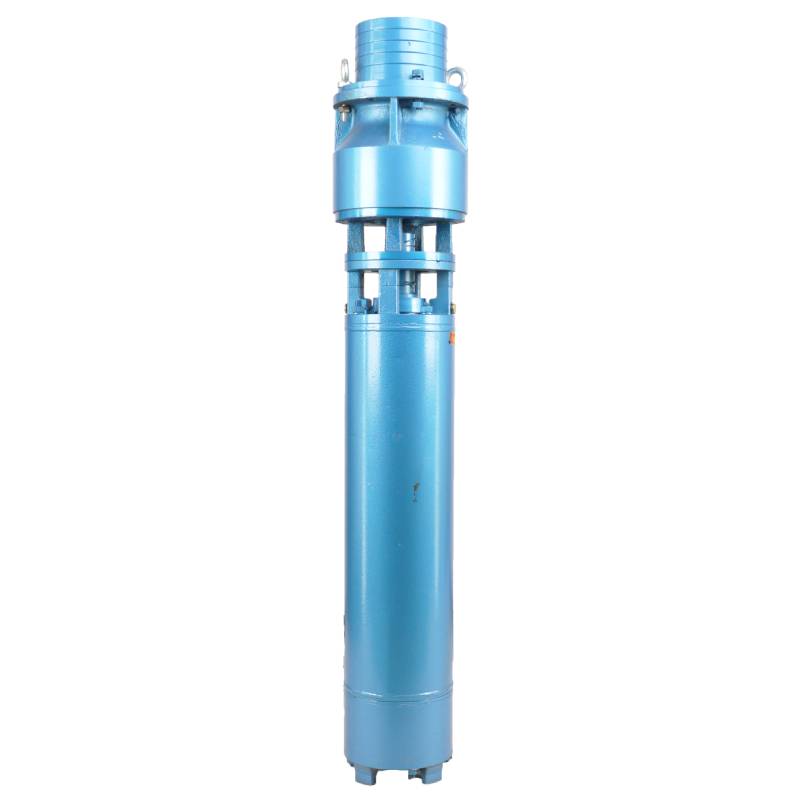Nov . 30, 2024 02:16 Back to list
dry run submersible pump
Understanding Dry Run Submersible Pumps
Submersible pumps are vital components in various water management applications, ranging from irrigation to wastewater treatment. However, a critical concern in the operation of these pumps is the phenomenon known as dry running. This article delves into what dry running entails, its implications, and the measures that can be taken to prevent it.
What is Dry Running?
Dry running occurs when a submersible pump operates without sufficient fluid. This situation can arise due to multiple reasons, such as a depletion of the water source, mechanical failure, or improper installation. When a pump runs dry, it can lead to severe damage to the motor and other internal components due to overheating. The absence of water means that the pump lacks lubrication, which is essential for its normal functioning.
Consequences of Dry Running
1. Mechanical Damage One of the most significant issues related to dry running is the potential for mechanical failure. The impeller and other moving parts of the pump rely on the fluid for lubrication and cooling. Without water, these components can experience excessive wear and tear, resulting in costly repairs or replacements.
2. Overheating The motor of a submersible pump generates heat during operation, and when it runs dry, the heat does not dissipate effectively. This overheating can lead to insulation breakdown, potentially causing electrical failures or even fires.
3. Increased Energy Consumption A dry running pump may continue to consume energy without delivering any output. This inefficient use of power not only raises operational costs but also puts additional stress on the electrical system.
4. Operational Downtime The damage caused by dry running can render a pump inoperable, leading to downtime in critical systems. This interruption can adversely affect agricultural operations, municipal water supply systems, and industrial processes where water is essential.
dry run submersible pump

Prevention Measures
Preventing dry running is crucial for ensuring the longevity and efficiency of submersible pumps. Here are several strategies that can be employed
1. Level Sensors Installing fluid level sensors can provide real-time monitoring of the water level in pumps. These sensors can trigger an alarm or shut off the pump when the water level drops below a preset threshold, preventing dry running.
2. Automatic Controls Incorporating automated control systems can help in managing pump operation more efficiently. These controls can be programmed to monitor flow rates and automatically stop the pump when water is not present.
3. Regular Maintenance Routine inspections and maintenance of pumps and their associated systems can help detect potential issues before they lead to dry running. Checking for blockages, leaks, and ensuring that water sources are stable are essential practices.
4. Education and Training Operators should be well trained in recognizing the signs of dry running and the necessary response actions. Understanding the risks associated with dry operation can help in recognizing troubling signs early and implementing corrective measures.
5. Backup Systems In critical applications, having a backup water source or an alternate pump can provide a safeguard against dry running. This redundancy allows for continued operation even if one system fails.
Conclusion
Dry running is a serious concern for submersible pump operations that can lead to significant mechanical damage and operational inefficiencies. By implementing proactive measures, including the use of sensors, automated controls, and routine maintenance, operators can effectively mitigate the risks associated with this phenomenon. Understanding the dynamics of dry running and taking appropriate actions is essential for maximizing the longevity and performance of submersible pumps, ensuring they continue to serve crucial functions in various applications.
-
Submersible Water Pump: The Efficient 'Power Pioneer' of the Underwater World
NewsJul.01,2025
-
Submersible Pond Pump: The Hidden Guardian of Water Landscape Ecology
NewsJul.01,2025
-
Stainless Well Pump: A Reliable and Durable Pumping Main Force
NewsJul.01,2025
-
Stainless Steel Submersible Pump: An Efficient and Versatile Tool for Underwater Operations
NewsJul.01,2025
-
Deep Well Submersible Pump: An Efficient 'Sucker' of Groundwater Sources
NewsJul.01,2025
-
Deep Water Well Pump: An Efficient 'Sucker' of Groundwater Sources
NewsJul.01,2025
-
 Submersible Water Pump: The Efficient 'Power Pioneer' of the Underwater WorldIn the field of hydraulic equipment, the Submersible Water Pump has become the core equipment for underwater operations and water resource transportation due to its unique design and excellent performance.Detail
Submersible Water Pump: The Efficient 'Power Pioneer' of the Underwater WorldIn the field of hydraulic equipment, the Submersible Water Pump has become the core equipment for underwater operations and water resource transportation due to its unique design and excellent performance.Detail -
 Submersible Pond Pump: The Hidden Guardian of Water Landscape EcologyIn courtyard landscapes, ecological ponds, and even small-scale water conservancy projects, there is a silent yet indispensable equipment - the Submersible Pond Pump.Detail
Submersible Pond Pump: The Hidden Guardian of Water Landscape EcologyIn courtyard landscapes, ecological ponds, and even small-scale water conservancy projects, there is a silent yet indispensable equipment - the Submersible Pond Pump.Detail -
 Stainless Well Pump: A Reliable and Durable Pumping Main ForceIn the field of water resource transportation, Stainless Well Pump has become the core equipment for various pumping scenarios with its excellent performance and reliable quality.Detail
Stainless Well Pump: A Reliable and Durable Pumping Main ForceIn the field of water resource transportation, Stainless Well Pump has become the core equipment for various pumping scenarios with its excellent performance and reliable quality.Detail
